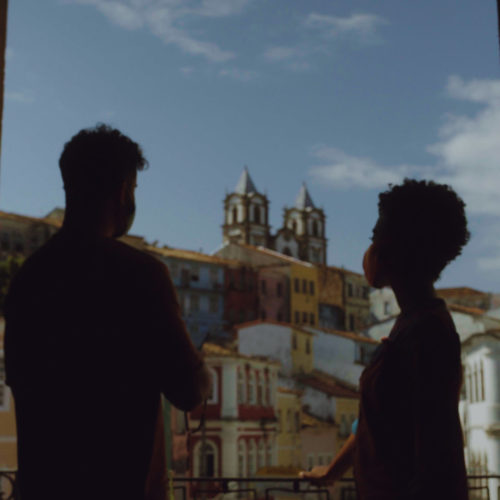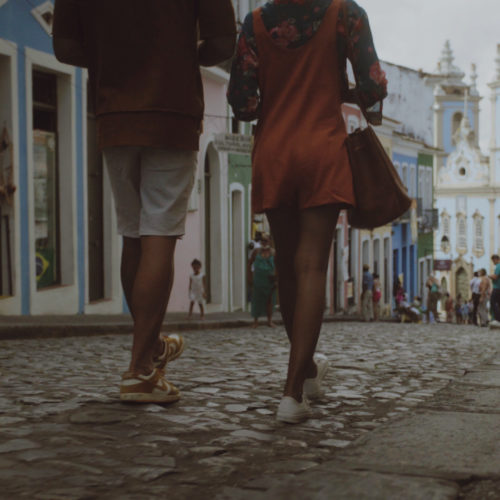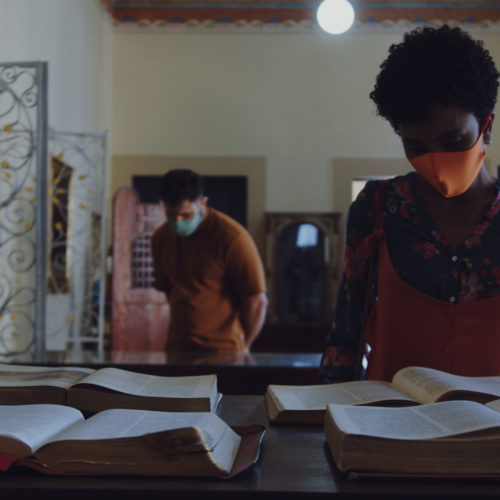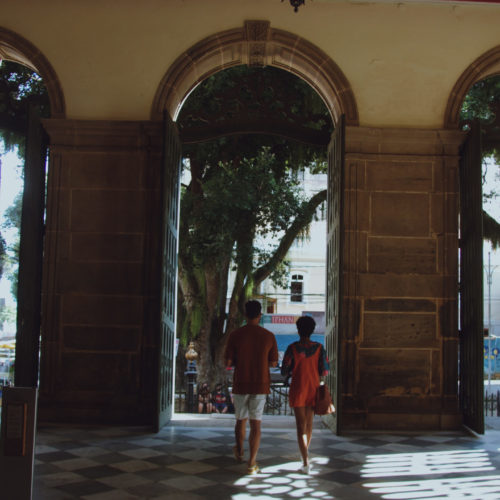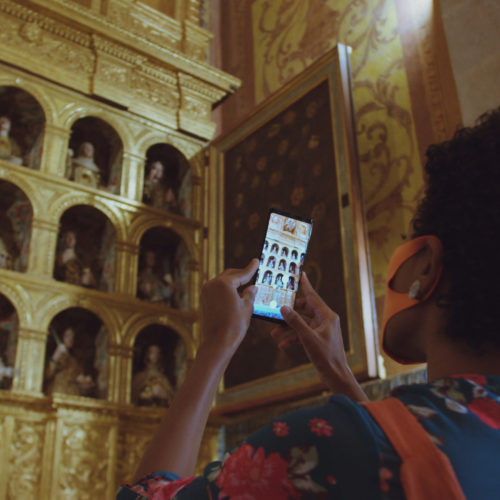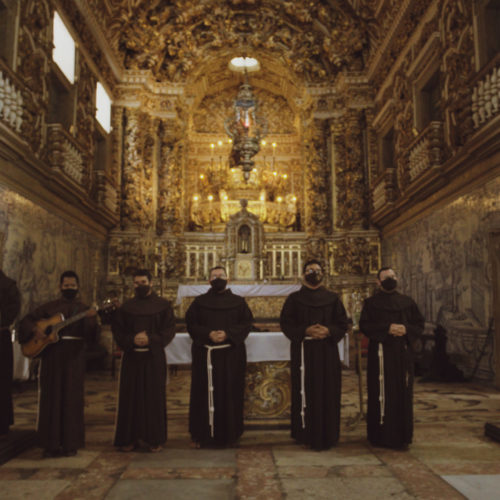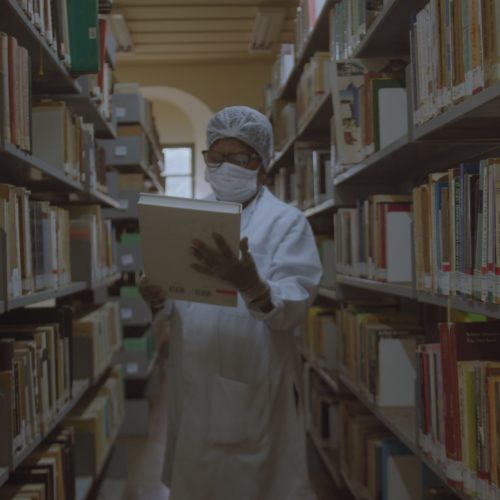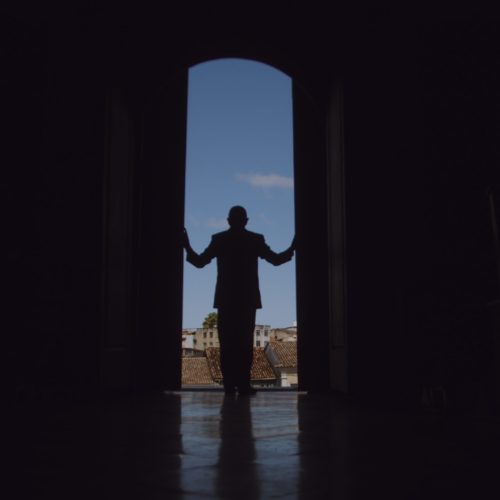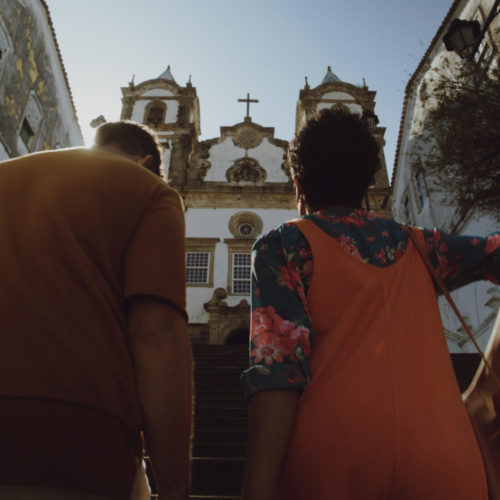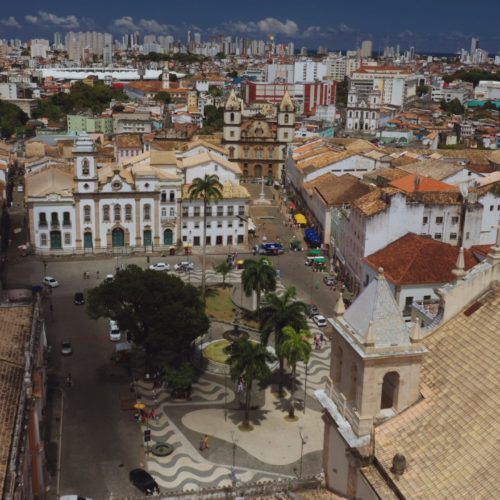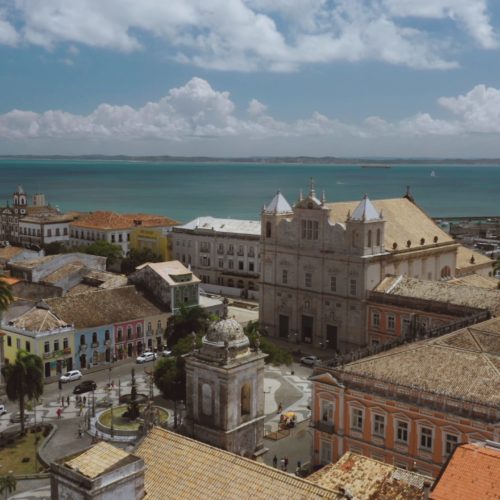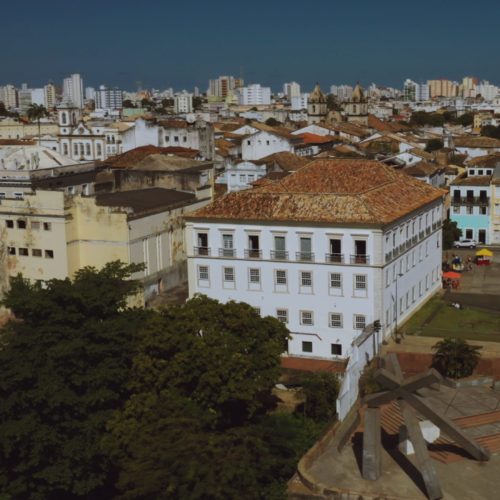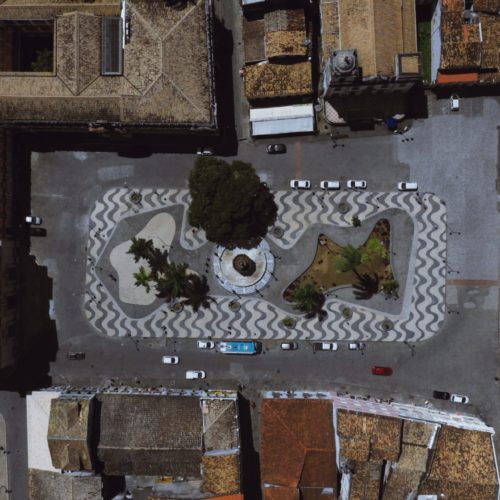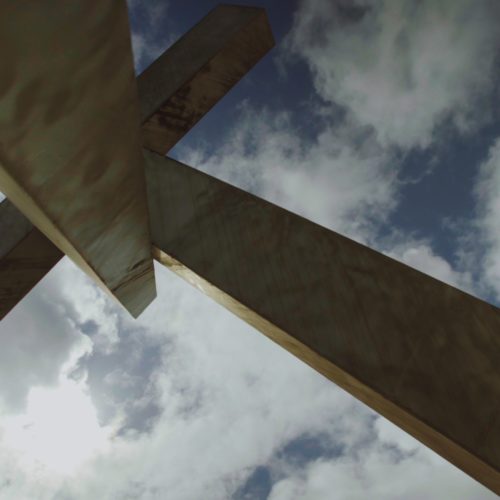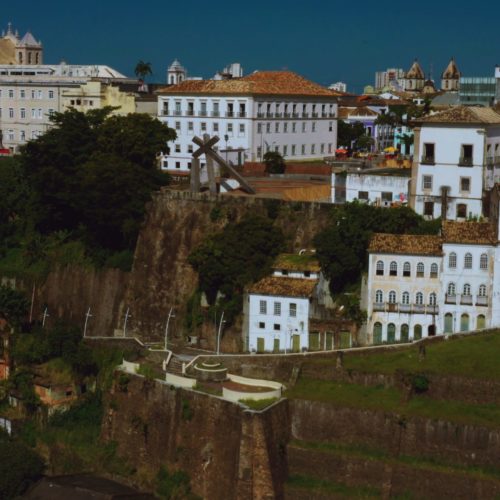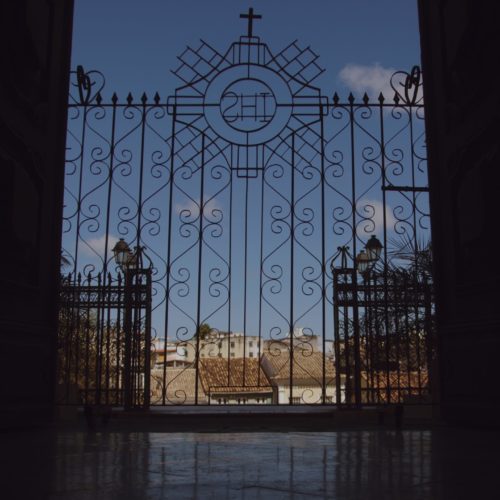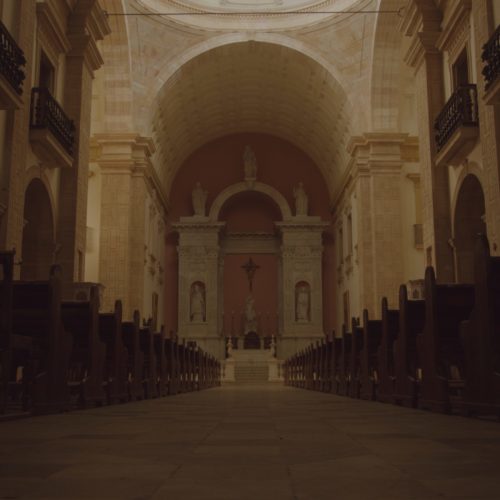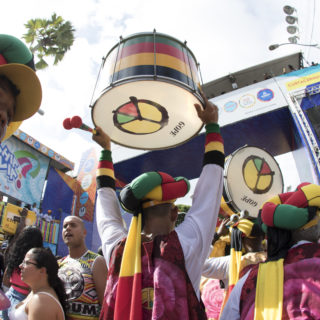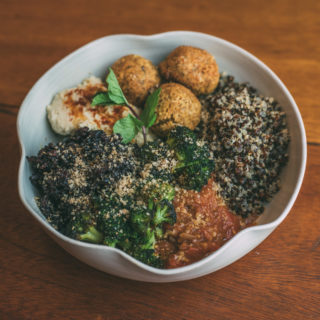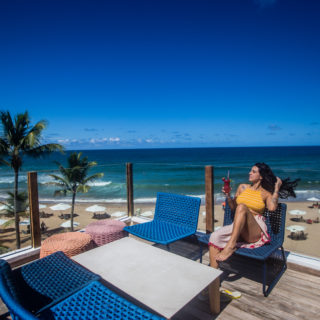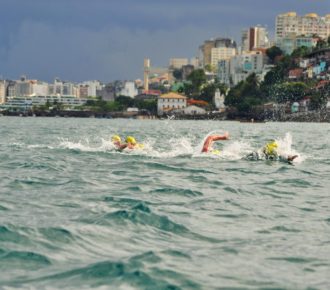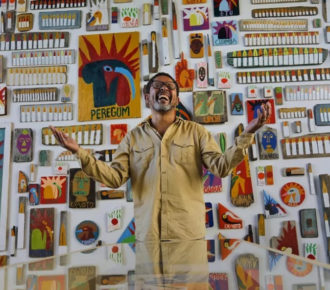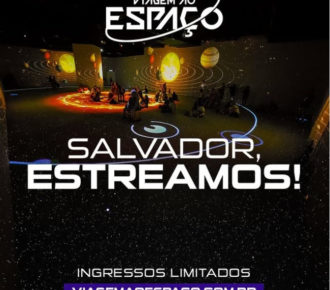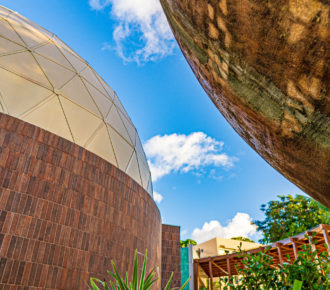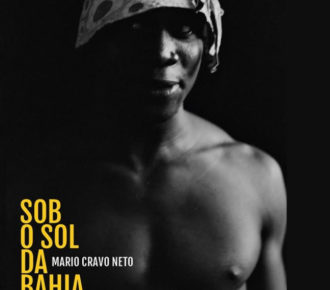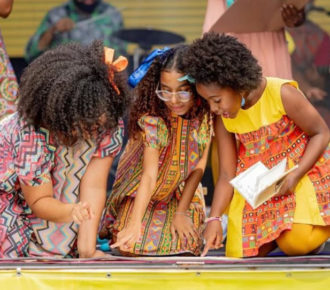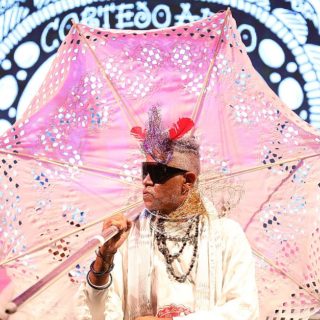
Sculptures, paintings, incredible facades and many curiosities in this itinerary through the Catholic churches of Salvador
Salvador, syncretic land, powerful not only in culture and beauty, but also in its faith. We can say that Salvador is a sanctuary city, a place with many churches, devotions and spirituality packed in an originality of human and cultural types not found anywhere else in the world.
With this in mind, the City of Salvador, through the Department of Culture and Tourism (SECULT), in partnership with the Pastoral do Turismo, is launching the Caminhos de Fé (Walks of Faith) webseries. The project consists of a series of three episodes featuring immersive itineraries where we experience churches , sanctuaries, museums and Catholic temples in Salvador. Learn more at this link.
In the itinerary “Arte e Fé Católica” (Catholic Art and Faith), we go to the Historic Center of Salvador. There are 15 destinations, including churches and ecclesiastical museums. On this walk, which can be done on foot, faith shines through in the beauty of art, in the refinement of baroque, in the tradition of the Third Orders and Brotherhoods, in the devotions and processions that have traversed streets and hillsides for over 400 years.
Come with Visit Salvador da Bahia and learn more about each church
Mosteiro de São Bento (St. Benedict’s Monastery)
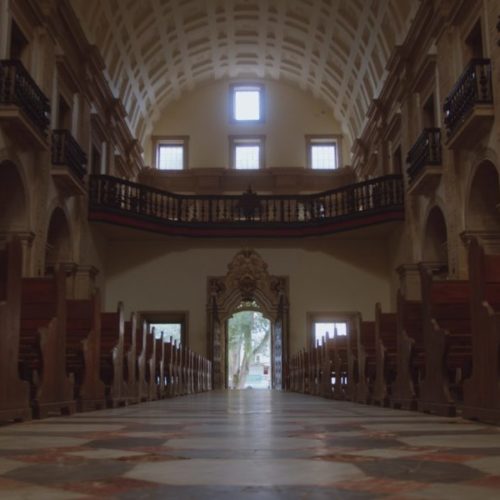
No one passing through the imposing St. Benedict’s Monastery can imagine that there is a museum inside with a representative exhibition of a collection with more than two thousand pieces. Installed in the upper galleries of the Basilica of St. Sebastian, the site displays paintings, porcelain, crystals, jewelry, furniture, vestments, in addition to 223 units of religious imagery.
Today’s tour begins here, at the first Benedictine monastery in America, founded in 1582. Its library houses thousands of rare works and its beautiful choir looks truly divine. Its sacred collection is immense and magnificent. Learn more at this link.
Basilica of St. Sebastian – St. Benedict’s Monastery
Address: Largo de São Bento – Avenida Sete de Setembro.
Phone #: (71) 2106-5200
Igreja de Nossa Senhora da Ajuda (Church of Our Lady of Ajuda)
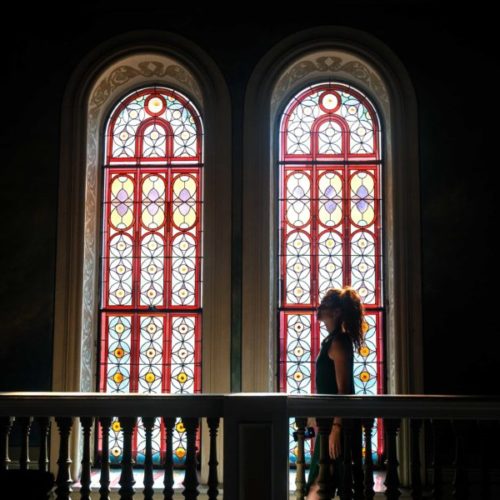
Inside the Church of Our Lady of Ajuda, the old colonial altars and a wooden pulpit from the 17th century were preserved, which served as a stage for Father Vieira’s sermons. In the church, the procession of the Fogaréu is also depicted on tiles.
In the highest part of the church, also open to the public, there is a large colorful French stained glass window with the image of Our Lady of Mercy, one of the great surprises of this building. Learn more at this link.
Address: Rua da Ajuda, no number, Historic Center.
Phone #: (71) 3322-3296
Visitation: Monday to Friday from 8 am to 5 pm / free entry
Igreja e Museu da Misericórdia (Church and Museum of the Merciful)
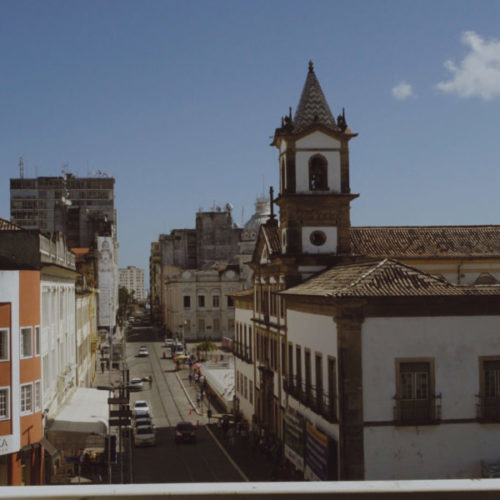
Santa Casa de Misericórdia da Bahia was born together with the city. The church and museum bear witness to more than four centuries of charity born of faith.
In the Church of the Merciful, there are several styles: baroque, rococo and neoclassical, which can be found in the movable and integrated heritage goods. Highlight for the Portuguese tile panels, depicting the Procession of the Fogaréu and the Procession of Bones. In this space, religious celebrations of the Brotherhood and events take place, in addition to being possible to lease the place for weddings and baptisms.
The Museum of the Merciful is one of the most important cultural spaces in Bahia and has in its collection works that tell a little of the history of the state and the country. Learn more at this link.
Address: Rua da Misericórdia, 6, Historic Center.
Phone #: (71) 2203-9835
Visitation: Tuesdays to Friday from 8:30 am to 5:30 pm; Saturdays from 9 am to 5 pm; Sundays and holidays from 12 pm to 5 pm / R$ 10.00 (normal) and R$ 5.00 (half)
Palácio da Sé Cultural Center
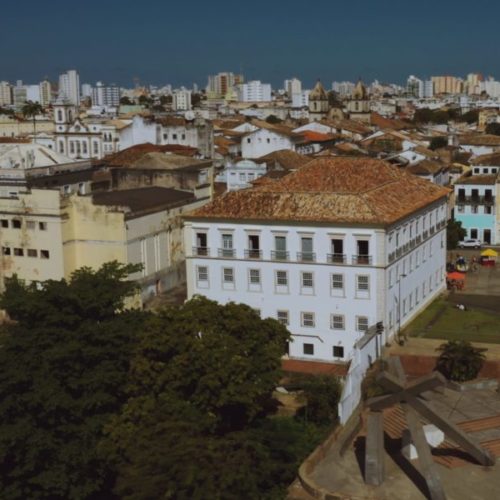
The Archbishop’s Palace was founded in 1715 by the 5th Archbishop of São Salvador, Dom Sebastião Monteiro da Vide. It was built to be the residence of bishops and archbishops. Today, named Palácio da Sé Cultural Center, it is a center of reference in the history of the Catholic Church in Brazil, with the collection of the Archdiocese of Salvador, in addition to a space for temporary exhibitions and also for events and ceremonies.
A beautiful exhibition
The “Terra Nova” room contextualizes the encounter with the new. In it, the 16th-century mark of demarcation of city limits stands out. In the “A Devoção” room, visitors will get a taste of what Bahia’s popular festivals are all about. A “procession of sacred images” that reflects the search of the Bahian people for the sacred, through dedication, sacrifice and commitment to the divine. Learn more at this link.
Address: Praça da Sé, 203-47 – Historic Center
Phone #: (71) 3838-9987
Visitation: Tuesdays to Sundays, from 8 am to 5 pm
Cathedral Basilica of the Savior
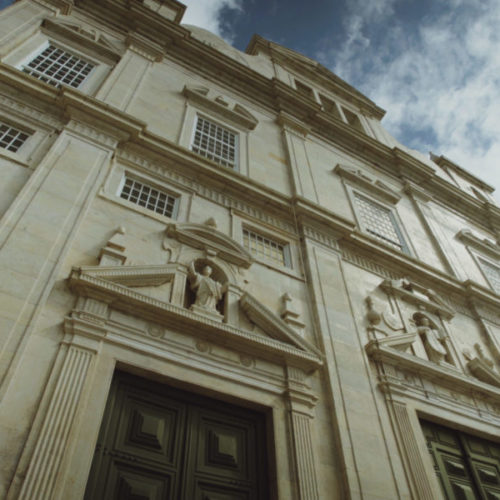
The former Jesuit chapel is considered the “mother church” of the Archdiocese of Salvador and of all dioceses in the country, as it is the Primate Headquarters of the Church in Brazil. It was founded in 1672, and has a Baroque style. The place houses a great collection of sacred art.
In the Cathedral Basilica of the Savior, there are 30 reliquary busts that have been restored. Today, together with the two altars, they are the most important collections of Brazilian sacred art from the end of the 16th century. The ceiling of this Cathedral nave is magnificent. The Latin symbol IHS means: Jesus the Savior of Humanity. Find out at this link.
Address: Largo Terreiro de Jesus, no number – Pelourinho
Phone #: (71) 3321-4573
Visitation: Visitation: every day, from 9 am to 4 pm / R$ 5.00. Masses on Sundays at 10am.
Church of St. Peter of Clerics
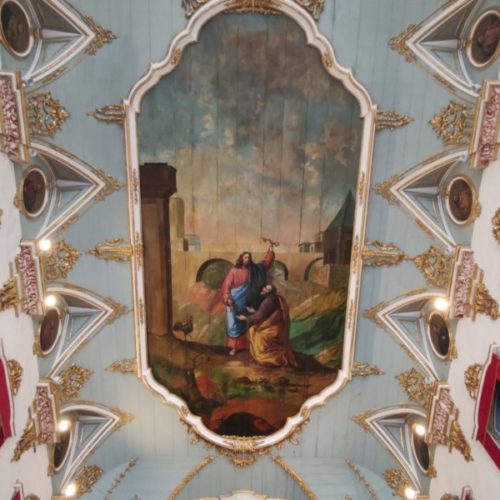
In Brazil, the Brotherhood of St. Peter of Clerics of São Salvador da Bahia was established in the 16th century. The altars and the chancel arch were carved in the transition period between the rococo and neoclassical styles.
Address: Largo Terreiro de Jesus, no number – Pelourinho
Visitation: Monday to Friday, 9 am to 12 pm and 2 pm to 5 pm / R$ 3.00
Church of St. Dominic of Guzman
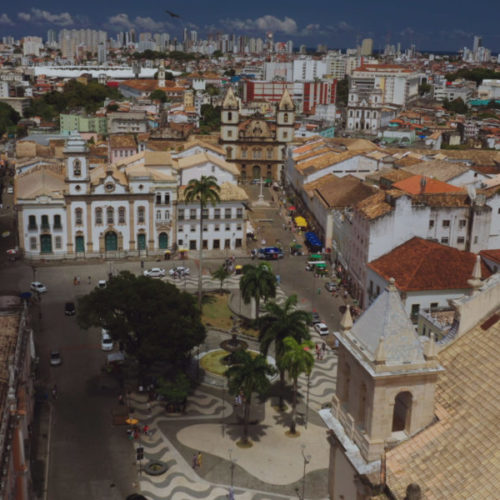
Its construction began in 1731 and was completed six years later. The Church of St. Dominic of Guzman has a rococo-style façade, while the interior follows the neoclassical style. But the highlight goes to the nave’s ceiling, which is covered with a painting measuring 173 square meters, in which the technique of baroque illusionism, attributed to José Joaquim da Rocha, considered the greatest painter of Brazilian baroque, was used.
The work represents a Catholic vision of life after death, with paradise. In the representation, José Joaquim used the concave shape of the ceiling to give an idea of depth and that “Paradise” has no end.
Visitors can visit the sacristy and the Capela da Boa Morte, where many wakes were held in the past. This tradition occurred because, in the past, the headquarters of the Forensic Medical Institute (IML) was in Pelourinho, facilitating the transfer of the coffin.
Address: Largo Terreiro de Jesus, no number – Pelourinho
Phone #: (71) 3242-4185
Visitation: It is still closed because of the pandemic. Reopening is scheduled for November 2021, operating from Monday to Friday, 9:00 am to 12:00 pm and 1:00 pm to 5:00 pm / R$ 5.00. Sunday Masses at 8am.
Convent and Church of San Francisco
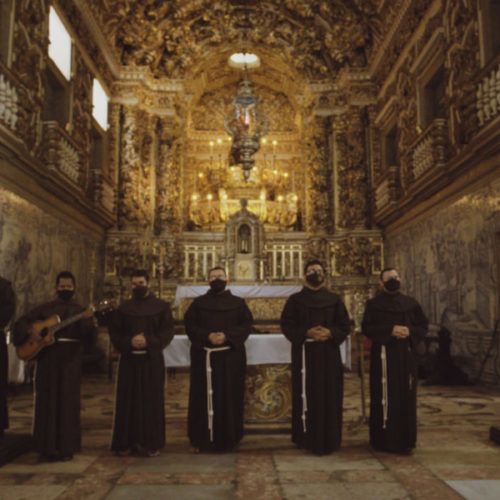
The Convent of San Francisco, in Salvador, was founded in 1587. The current church began to be built in 1708 and was inaugurated in 1713, with its stunning interior in gilded woodwork. The church is famous for its architecture and the details of the Baroque decoration.
The Church of San Francisco belongs to the Franciscan convent and is also known as the “Golden Church”, with gilded walls, columns, ceiling and altars, one of the most famous baroque monuments in the world. In addition to the gold embroidering the entire temple, there are still admirable sculptures in jacaranda.
The interior of the church comprises polychrome images of Bahian saint makers, masterpieces of sacred art, a lot of carved jacaranda and two stone sinks, donated by D. João V, king of Portugal. The pulpits and ceiling have various sacred paintings, and there are images of St. Peter of Alcantara, St. Benedict, St. Joseph, Heart of Jesus, Santo Antônio and St. Francis of Assisi on the main altar as well. On the left side, we highlight the images of Our Lady of Conception, Our Lady of Glory, Our Lady of Sorrows, Our Lady Santana, St. Luzia and St. Domingos. Learn more at this link.
Address: Largo do Cruzeiro de São Francisco, no number – Pelourinho
Phone #: (71) 3322-6430
Visitation: Mondays, Wednesdays, Thursdays, Fridays and Saturdays, from 9 am to 5:30 pm. Tuesdays, from 9am to 5pm. Sundays, from 10 am to 3 pm / R$5.00
Church of the 3rd Order of St. Francis
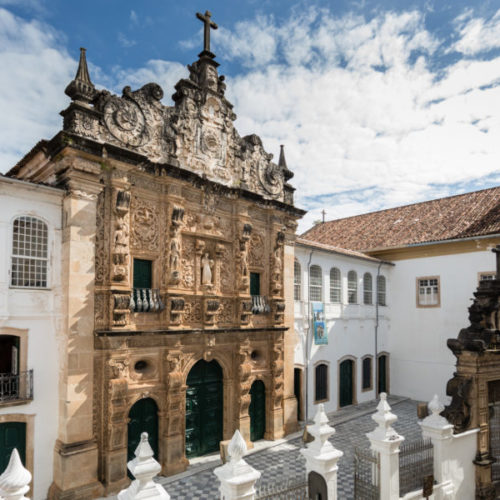
An expressive example of the Baroque of 1702. The place houses the only Portuguese tilework that represents the city of Lisbon, in Portugal, before the 1755 earthquake.
It is next to the Church of San Francisco and, as Jorge Amado well describes in his book Bahia de Todos os Santos – guia de ruas e mistérios: “…this façade is the most beautiful of all the churches in Bahia”.
Built between the 17th and 18th centuries, the Church of the Third Order of St. Francis has a washed sandstone facade decorated in high reliefs and is the only example in Brazil that refers to Spanish baroque. The project is by Gabriel Ribeiro, considered one of the introducers of baroque in Brazil. On the ceiling, there are paintings created by Franco Velasco.
A curious fact is that this beautiful facade was not always like this. For over a century, the facade has been covered with mortar. During renovations in the early 19th century, its interior became neoclassical and the façade was covered up. The “messiah of our wonderful photos” was an electrician who installed lights at the site and discovered, by hammering on the temple’s front structure, the original decoration. Learn more at this link https://www.salvadordabahia.com/experiencias/igreja-da-order-terceira-de-sao-francisco/
Address: Largo do Cruzeiro de São Francisco, no number – Pelourinho
Phone #: (71) 3321-6968 or (71) 9 9999-5576
Visitation: Church and Museum of Sacred Art, from Monday to Saturday, from 9 am to 12 pm and 1 pm to 5 pm. Sunday from 10 am to 3 pm / R$5.00
Church of Our Lady of the Rosary of the Black People
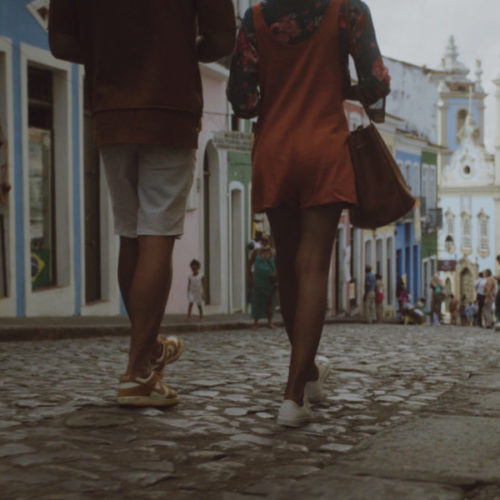
It was founded in 1685 by one of the first brotherhoods of black men in Brazil. The current Church in Pelourinho began to be built in 1704, by the black brothers themselves, including ex-enslaved people.
The book “Irmandade do Rosário dos Pretos – Quatro séculos de devoção” (Brotherhood of the Rosary of the Black People – Four centuries of devotion)* explains the union of Catholic rites and practices with an African sacred experience. The organization of Africans around the cult and adoration of Our Lady of the Rosary, since its elevation to the category of Third Order, allowed the incorporation of devotion to other saints of the Afro-Catholic tradition. Among them: St. Anthony of Carthage, Ephigenia, St. Elesbaan, St. Benedict, St. Barbara, St. Josephine Bakhita (canonized by Pope John Paul II in 2000) and even the slave Anastasia, still unrecognized in the Catholic hierarchy, but of strong value for Afro-Brazilian religiosity. Learn more at this link.
*Note:
The book Irmandade do Rosário dos Pretos – Quatro séculos de devoção can be purchased at the church itself. It has in-depth history and images of the place. All technical information in this text is taken from this edition.
Address: Largo do Pelourinho, no number – Pelourinho
Phone #: (71) 3241-5781 or (71) 9 9999-5576
Visitation: Monday to Saturday, 8 am to 12 pm and 1 pm to 5 pm / R$ 3.00
Church of the Blessed Sacrament of Passos
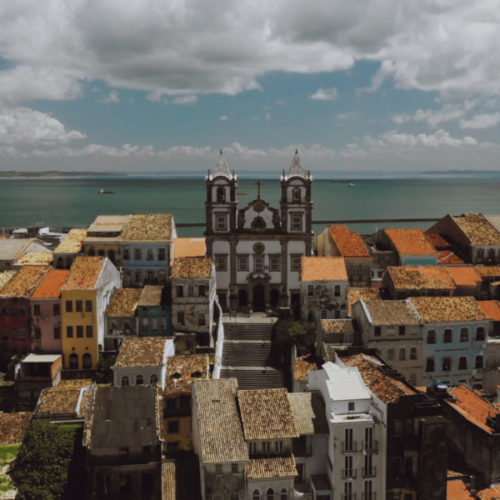
The construction of the temple began in 1736. The church has side aisles, tribunes and a choir on the upper floor, a transversal sacristy and an ossuary in the basement. The stairs immortalized in the film O Pagador de Promessas lead to the frontispiece of the temple.
Built in 1736 to be the church of the parish created 18 years earlier, the church of the Blessed Sacrament of Rua do Passo takes its name from its location on Rua do Passo, which is traditionally the path of the procession of the seven steps of Jesus carried out by the Carmelites during Holy Week, on the Good Friday. The symbolic first step of Jesus’ seven steps of reflection to Calvary is taken in front of the church. Learn more at this link.
Address: Rua do Passo, 52A – Santo Antônio Além do Carmo
Phone #: 71 98277-7909/ 98769-8929
Visitation: Monday to Saturday, from 9 am to 5 pm / R$ 5.00 / Scheduled visitation (minimum 5 people) to the church steeple and crypt
Church of the 3rd Order of Carmo

On the Carmo hillside there is an unmissable stop. It is the church of the Third Order of the Carmelite Brothers. It contains a rich architecture, a beautiful sacristy, catacombs and the old slave quarters where people enslaved by the Carmelite brothers were housed. There is the extraordinary image of the Dead Lord, with 2,000 ruby stone fragments in all the wounds and drops of blood. It was carved in the 18th century, by the sculptor Francisco Xavier das Chagas – known as “o Cabra”.
Learn more at this link
Address: Rua do Carmo – Ladeira do Carmo
Phone #: 71 3326-9432 or (71) 9 9999-5576
Visitation: Monday to Saturday – 8am to 12pm and 2pm to 4pm / R$ 5.00
Church of Our Lady of Carmo
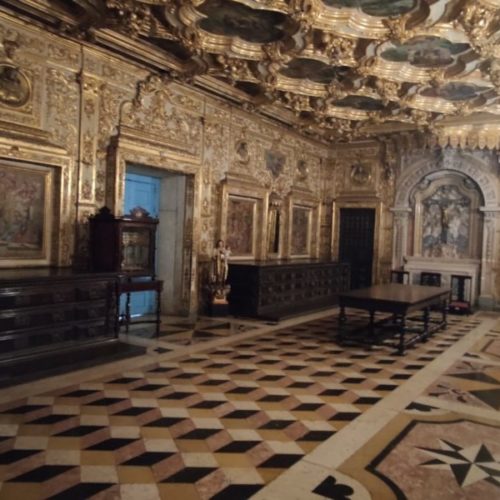
Built in the early 17th century, in neoclassical style, the Church of Our Lady of Carmo has one of the most beautiful sacristies in the world. The convent is the largest of the Carmelite Order in the world, having two cloisters and 80 cells and part of them already housed the first luxury historical hotel in Brazil*.
The Church of Carmo, linked to the Carmelite convent, was founded in 1585. In addition to a 17th century bronze crucified, imposing statues of the Popes São Telésforo and São Dionísio and the Bishops São Pedro Tomaz and Santo André Cursino, great Carmelite dignitaries, stand out. The furniture is also magnificent, with rosewood cabinets with hand-crafted silver handles.
Today, there is also the wonderful Christ in the Column, by Chagas, o Cabra, the greatest Bahian sculptor of all past times.
The first luxury hotel in Brazil*: *Transforming convents into hotels is common in Europe, but in Brazil it is rare.
Address: Rua do Carmo – Santo Antônio Além do Carmo
Phone #: 71 3242-0182
Visitation: Monday to Friday, 7 am to 5 pm and Saturday, 8 am to 12 pm / Free entry
Church of Boqueirão
It was built in 1726 by the 3rd Order of the Mulatto Brothers. Its architecture is divided into neoclassical and baroque styles and its frontispiece is similar to that of the Church of Our Lady of the Rosary of the Black People, in Pelourinho.
The building of the Catholic temple was completed between the end of the 18th century and the middle of the 19th century, with the construction of two towers on the main façade, covered with white tiles, in the Rococo style. Inside, the church is decorated in neoclassical and baroque style. A curiosity is that the church was named Boqueirão because it was built on a large hillside, where the old trench was located in the geological fault that divides the Upper City from the Lower City.
Address: Rua Direita de Santo Antônio, 60 – Santo Antônio Além do Carmo
Phone #: Third Orders, Brotherhoods and Devotions – E-mail: jonathandasilva31@gmail.com Coordinator: Célia Marina Bahiense Moreira – (71) 9 9999-5576
Church of Santo Antônio Além do Carmo
It was founded in 1594, when Cristóvão de Aguiar Daltro built a chapel in honor of St. Antônio. The expression “Além do Carmo” (Beyond Carmo) is an allusion to its geographical position, since the church was located beyond one of the entrance doors to the city of Salvador – more specifically, the Gates of Carmo Convent.
From a small chapel, it underwent expansions and renovations. It was the stage for Dutch invasions and also for Portuguese resistance. It is said that Father Antônio Vieira, to prevent Dutch troops from conquering Salvador, used the pulpit of the church to preach his sermon ‘On the edge of the trenches’, which, for 40 days, defended the city against Nassau’s troops.
It was elevated to Mother Church in 1648, with the creation of the parish and reconstruction and expansion of the temple, and continued to undergo renovations until the 20th century. Its interior is covered with plaster, neoclassical carving and its façade is typically rococo. In front of it, a fort was built, in view of its strategic position for the time.
Another interesting thing is that in the courtyard of this church there are rehearsals for the carnival group “De Hoje a Oito”, “Bailinho” parties and shows by Skanibais, among others. The tour is unforgettable in the late afternoon, when the sunset is special! In the square, there is a bandstand widely used by residents, which gives the neighborhood a small-town feel. Learn more at this link.
Address: Largo de Santo Antônio Além do Carmo, no number – Santo Antônio
Phone #: (71) 3242-6463
Visitation: The church is closed due to roof works. Expected to open in December 2021. When they return, they will be open every day, from 9 am to 5 pm / free of charge. Masses: Tuesday at 6:30 pm and Sunday at 10 am (Until the reopening, the masses are being held at the Church of Boqueirão).
For a safe ride
Many places still have opening hours and masses undergoing adaptation due to the pandemic. The best option is to call the Pastoral Office of Salvador (71) 4009-6605 and confirm the possibilities. Or access the Archdiocese portal at this link.

